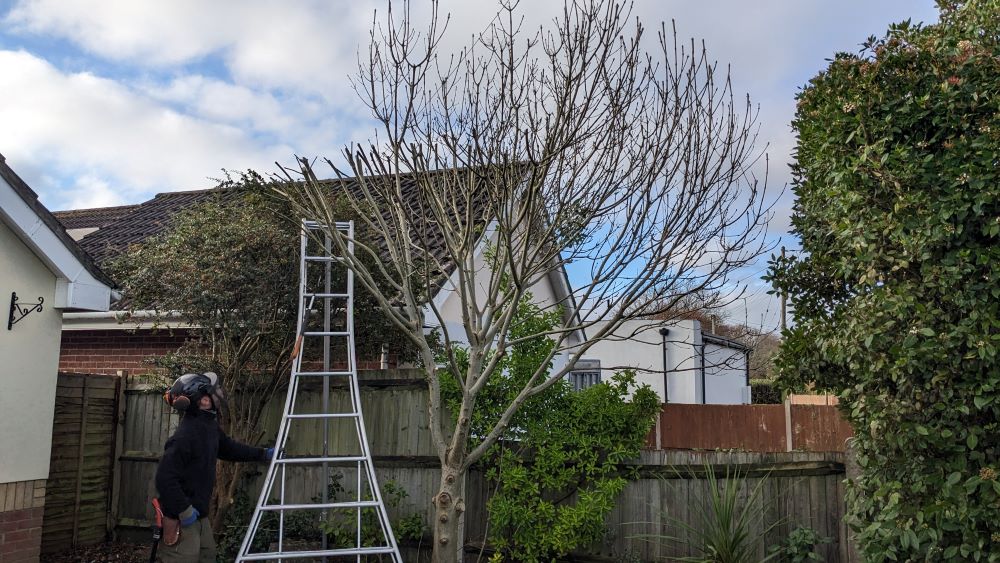1. Introduction: The importance of winter pruning for trees and shrubs
Proper winter pruning is essential for the health and aesthetics of trees and shrubs. Winter is the ideal time to prune because the plants are dormant, which reduces the risk of damage or disease. Pruning during this time helps promote new growth in the spring and encourages the plants to develop a strong structure. However, it's crucial to understand the proper techniques and timing for winter pruning to avoid causing harm to the plants. In this article, we will discuss the importance of winter pruning and provide helpful tips and guidelines for successful pruning of trees and shrubs.
2. Understanding the benefits of winter pruning
Understanding the benefits of winter pruning is crucial for any gardener or homeowner looking to maintain healthy and beautiful trees and shrubs. One of the primary advantages of winter pruning is that it promotes new growth in the spring. By removing dead or damaged branches during the dormant season, you're providing space for new buds to emerge and develop. This results in a fuller and more vibrant canopy come springtime.
Moreover, winter pruning helps to shape and structure the plants. By selectively trimming certain branches, you encourage the growth of others, leading to a well-balanced and aesthetically pleasing form. Additionally, pruning during the winter reduces the risk of spreading diseases or infestations, as most pests and diseases are inactive during this period.
In the next section, we will delve into some practical pruning techniques to help you navigate the winter pruning process successfully. Stay tuned!
3. Proper techniques and tools for winter pruning
Proper techniques and tools for winter pruning
When it comes to winter pruning, using the correct techniques and tools is essential to ensure that you achieve the desired results without causing harm to your trees and shrubs. Here are some important considerations:
- Clean and sharpen your tools: Before starting any pruning work, it's important to clean and sharpen your pruning shears, loppers, and pruning saws. This will not only make your job easier but also minimise the risk of spreading diseases between plants.
- Prune strategically: When pruning, make sure to remove dead, damaged, or diseased branches first. Then, focus on thinning out crowded areas to allow air and sunlight to penetrate the canopy. Lastly, shape and structure the plant by selectively trimming branches to encourage balanced growth.
- Follow proper pruning cuts: When removing branches, use the appropriate pruning cuts. For larger branches, use a three-cut technique - start by making an undercut, followed by a top cut, and finish with a final cut at the branch collar. This will prevent tearing and promote quick healing.
- Consider plant species and growth habits: Different trees and shrubs have unique growth habits, so it's important to know the specific pruning needs of each plant species. Research the recommended pruning techniques for your particular plants to ensure you're achieving the best results.
By following these proper techniques and using the appropriate tools, you'll be well-equipped to tackle your winter pruning with confidence and achieve healthy and beautiful trees and shrubs. In the next section, we'll discuss some common mistakes to avoid during the winter pruning process. Stay tuned!
4. Timing and considerations for winter pruning
Timing is crucial when it comes to winter pruning. It is important to choose the right time to prune your trees and shrubs to avoid any negative effects on their health and growth. In general, it is best to prune during the dormant season, which is typically late winter or early spring. However, there are exceptions, so it is important to research and understand the specific needs of your plants before pruning.
Considerations should also be made for weather conditions. Avoid pruning during periods of extreme cold or when there is a risk of frost, as this can cause damage to the plant. It is also important to note that certain species may have specific pruning requirements, such as flowering trees that should be pruned immediately after flowering.
Taking the time to understand the timing and considerations for winter pruning will ensure that you are promoting the health and vitality of your trees and shrubs. In the next section, we will discuss the importance of proper pruning aftercare. Stay tuned!
5. Hiring a professional vs. DIY winter pruning
Now that you understand the timing and considerations for winter pruning, you may be wondering whether you should hire a professional or tackle the task yourself. While DIY pruning can be a cost-effective option, there are certain benefits to hiring a professional arborist.
Firstly, professionals have the expertise and knowledge to assess the specific needs of your trees and shrubs. They can identify any potential issues, such as diseases or structural weaknesses, and provide appropriate solutions.
Additionally, professional arborists have the necessary equipment and tools to safely and efficiently prune your plants. This is especially important for larger trees or hard-to-reach areas, where specialised equipment and training are required.
Furthermore, hiring a professional can save you time and effort. Pruning can be a time-consuming and physically demanding task, and professionals can complete the job quickly and effectively, allowing you to focus on other aspects of your garden.
Ultimately, the decision to hire a professional or perform DIY pruning depends on your level of experience, the size and complexity of the job, and your personal preferences. It may be beneficial to consult with a professional arborist to assess the specific needs of your trees and shrubs and determine the best course of action.
6. Tips for maintaining healthy trees and shrubs after winter pruning
After completing your winter pruning, it's important to provide proper care to ensure the health and growth of your trees and shrubs. Here are some tips to help you maintain their vitality:
- Mulch: Apply a layer of organic mulch around the base of your plants to help retain moisture, regulate temperature, and suppress weed growth. Be careful not to pile the mulch against the trunk, as this can cause rot.
- Watering: While trees and shrubs may not require as much watering during the winter, it is still important to provide supplemental irrigation during dry spells. Water deeply and infrequently, allowing the soil to dry out between watering sessions.
- Fertilisation: Consider applying a slow-release, balanced fertilizer in early spring to provide essential nutrients to your plants. Follow the manufacturer's instructions for application rates and timing.
- Monitoring: Regularly inspect your plants for signs of pests, diseases, or other issues. Promptly address any problems that arise to prevent further damage.
- Pruning maintenance: Throughout the year, continue to monitor and prune your trees and shrubs as needed. Remove any dead, damaged, or crossing branches to maintain plant health and a desirable shape.
By providing these post-pruning measures, you can help your trees and shrubs thrive and beautify your garden for many years to come.
7. Conclusion: The value of winter pruning in promoting growth and longevity
In conclusion, winter pruning plays a vital role in promoting the growth and longevity of your trees and shrubs. By following the tips provided in this blog, you can ensure that your plants receive the proper care they need after pruning.
Remember to apply mulch around the base of your plants to retain moisture and regulate temperature. Be mindful of not piling the mulch against the trunk to prevent rot. Additionally, providing supplemental irrigation during dry spells will help maintain the health of your trees and shrubs.
Consider fertilising your plants with a slow-release, balanced fertilizer to provide them with essential nutrients. Regular monitoring is essential to identify and address any potential issues promptly.
Lastly, continue to prune your trees and shrubs as needed throughout the year to maintain plant health and a desirable shape.
By implementing these post-pruning measures, you can ensure the continued health and beauty of your trees and shrubs for many years to come. Stay tuned for more gardening tips and advice in our upcoming blogs.



